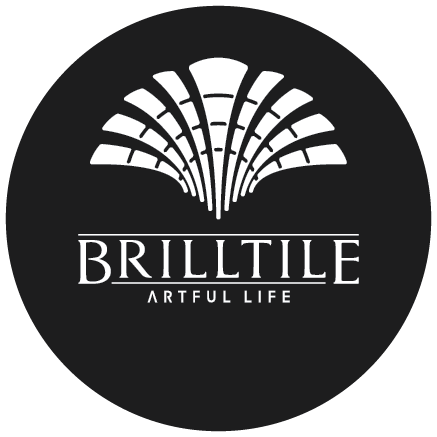Characteristic
Tile from BRILLTILE has various kind of glaze and characteristics. Finding your proper characteristic and design.
DISTORTED & INCONSISTENT TILE SIZES
As a result of the hand-made production process, BRILLTILE are shrunk and expanded form burning at high temperature. This may cause inconsistent size and shape of tiles.
TOLERANCE OF TILE DIMENSION IN ALL MODEL
± 5 mm. | All Model
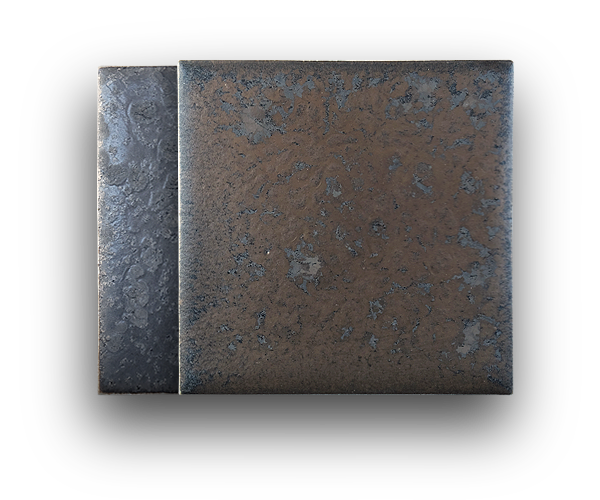
INCONSISTENT COLOUR
Due to the burning technique at the temperature over 1,200° celsius, the colour and coated surface, including the number of glazes (for crystal glazed tiles), are different from tile to tile.
SILVER | MR005 Some glaze has variable shade of colour. Light, medium and dark shade may occur. Silver glaze is the best example to explain.
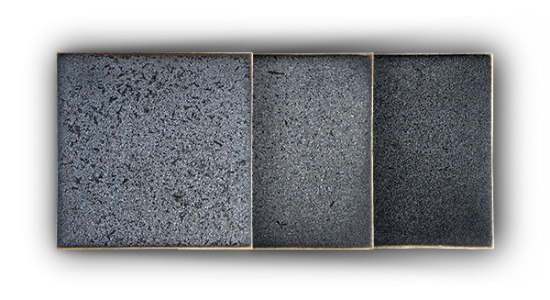
JASMINE BLUE | MR011 Some glaze has variable in number of crystal on surface such as Jasmine and Iris glaze.
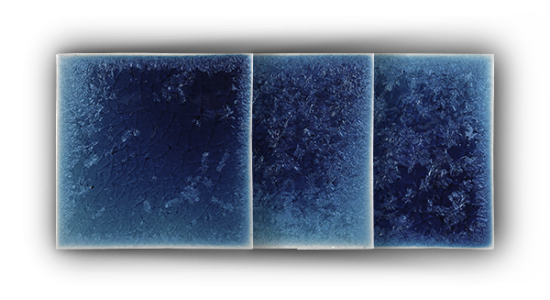
THE MOON | MR009 Some Metallic glaze, There are variable in number of Crystal on surface.
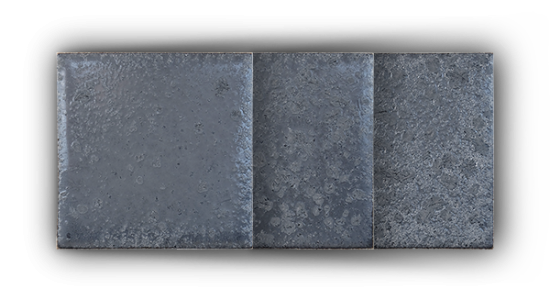
PYTHON | MR008 Python is strange, There is variable in pattern blending of dark gold and matt black colour.
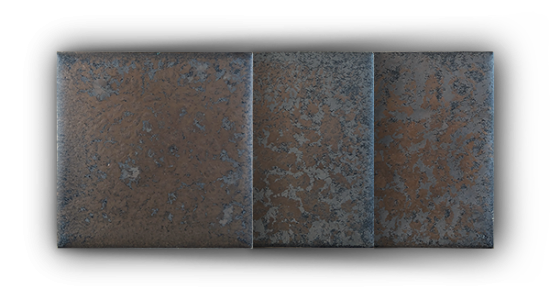
WATER ABSORPTION | ISO 10545-3
Absorption is the product capacity for penetration.
BRILLTILE is very dense product with a very low absorbency rate.
1.18 % | All Model
Report by: Ceramic Industrial Development Centre. Department of Industrial promotion, Ministry of Industry
BREAK STRENGTH | ISO 10545-4
Test the tile resistance to heavy loads. The breaking strength is force needed to break the tile.
All Model | 607.22 kgf/cm²
ROCCA | 294.78 kgf/cm²
SERPENT | 190.18 kgf/cm²
Report by: Ceramic Industrial Development Centre. Department of Industrial promotion, Ministry of Industry
ABRASION RESISTANCE | ISO 10545-7
Test the tile resistance of materials and structures to abrasion can be measured by the amount of mass lost per 1,000 cycles of abrasion
All Glaze
Less than 0.07%
Report by: The Department of Science
FROST RESISTANCE | ISO 10545-12
After 100 Freeze-thaw cycles the tile tested showed no evidence of damage.
PASS | All Model
Report by: National Metal and Materials Technology Center | MTEC
CHEMICAL RESISTANCE | ISO 10545-13
The ISO standard 10545-13 tests a tile resistance to chemical interaction. Tiles, which are going to be exposed to aggressive chemical, should be evaluated based on the performance of the test.
HOUSEHOLD CHEMICALS
PASS
Metallic glaze except Python, Bambusa and Bambusa Gold
Iris glaze
Jasmine glaze
Candy glaze
Colony glaze except Blue Moon, Midnight Teal, Black Pearl
Pantone glaze
NOT PASS
Python, Bambusa, Bambusa Gold, Blue Moon, Midnight Teal, Black Pearl
SWIMMING POOL SALTS
PASS
Metallic glaze except Python, Bambusa Gold
Iris glaze
Jasmine glaze
Candy glaze
Colony glaze except Blue Moon, Midnight Teal, Black Pearl
Pantone glaze
NOT PASS
Python, Bambusa Gold, Blue Moon, Midnight Teal, Black Pearl
LOW CONCENTRATIONS ACIDS AND ALKALIS
PASS
Chromium, Matt Chromium
Jasmine glaze
Candy glaze
Colony glaze except Blue Moon, Midnight Teal, Black Pearl
Pantone glaze
NOT PASS
Metallic glaze except Chromium, Matt Chromium, Iris glaze, Blue Moon, Midnight Teal, Black Pearl
HIGH CONCENTRATIONS ACIDS AND ALKALIS
PASS
Chromium, Matt Chromium
Jasmine glaze
Candy glaze
Colony glaze except Blue Moon, Midnight Teal, Black Pearl
Pantone glaze
NOT PASS
Metallic glaze except Chromium, Matt Chromium, Iris glaze, Blue Moon, Midnight Teal, Black Pearl
Report by: National Metal and Materials Technology Center | MTEC
SLIP RESISTANCE | DIN 51130
These are German test methods that require an operator with standard footwear (DIN51130) or barefoot (DIN51097) to walk on the test surface. Known also as the ramp test, the inclination angle of the test surface, can be varied under the control of the operator, the test surface can be sprayed with liquid contaminant at a prescribed rate, motor oil (DIN51130) to a soap solution (DIN51097). The operator, wearing a fall restraint harness gradually increases the inclination of the ramp until he or she feels insecure or slips when walking up and down the slope. The angle at which slipping occurs is used to establish a classification “R” value for the shod test.
| Metallic glaze | represent by Matt Chromium | R9 | Dry areas |
| Iris glaze | represent by Forest green | R10 | Areas kept largely dry |
| Jasmine, Candy and Colony glaze | represent by Candy Grey | – | Dry areas |
| Pantone glaze | represent by Pantone Warm Grey | R9 | Dry areas |
Report by: National Metal and Materials Technology Center | MTEC
SLIP RESISTANCE | ASTM C1028
This standard tests the anti-slip properties by determining the coefficient of friction between the tile and a body with a rubber surface. This test is performed in both dry and wet conditions. The COF (coefficient of friction) is defined as the horizontal force needed to overcome the vertical force of the objects weight.
Determine of the dynamic coefficient of friction of ceramic surface in Horizontal
| WET | DRY | GLAZE COLOUR |
| 0.46 | 0.54 | Mirror |
| 0.47 | 0.63 | Silver |
| 0.44 | 0.59 | Forest green and All Iris glaze |
| 0.48 | 0.55 | Python |
| 0.35 | 0.57 | Jasmine green and All Jasmine glaze |
| 0.45 | 0.52 | Bambusa |


